Background:
What are Cyanobacteria?
Cyanobacteria are a group of photosynthetic bacteria commonly found in many lakes, ponds, and reservoirs. They share many similarities in overall appearance, habitat, and nutrient requirements with algae, and because of this, were originally misclassified as algae. In fact, many people still refer to them as blue-green algae, and their accumulation at the water’s surface as a blue-green algae bloom.
Alberta lakes are home to more than 100 species of cyanobacteria. They range in appearance from tiny cells invisible to the naked eye to larger colonies that may look like fine grass clippings, small shapeless clumps, or spheres several millimeters in diameter. Given the right conditions, the bacteria may multiply significantly , causing extensive growths referred to as blooms. These blooms form during calm conditions and often appear as a blue-green or greenish-brown scum on the surface of the water. They also may produce a musty earth or grassy odour.
, causing extensive growths referred to as blooms. These blooms form during calm conditions and often appear as a blue-green or greenish-brown scum on the surface of the water. They also may produce a musty earth or grassy odour.
Unfortunately, some bloom forming species of cyanobacteria produce toxins, and when the bacteria die and decay, the toxins may be released into the water, which can pose a potential health risk to humans and animals. However, not all types of cyanobacteria produce toxins, and you cannot tell if a bloom is harmful or not based on how it looks. You should therefore treat all cyanobacterial blooms with caution.
What are cyanobacterial blooms and why do they occur?
During the warm summer months cyanobacteria may multiply significantly, causing extensive growths referred to as blooms.
Cyanobacteria are well adapted to grow in Alberta’s nutrient rich lakes, ponds, and reservoirs. They have the ability to out-compete algae for optimal levels of sunlight and nutrients, factors necessary for photosynthesis and essential for growth. The bacteria do this, in part, by regulating their buoyancy in the water column. Unfortunately, cyanobacteria can sometimes become over-buoyant, causing them to concentrate near the surface of the water. This tends to occur when calm conditions follow windy periods. Surface accumulations may intensify when waves concentrate the bacteria in bays or along shorelines and beaches. This results in blooms that may appear as brightly coloured slicks or scums on the surface of the water.
In Alberta, blooms are most common from early July to mid-September. A typical bloom will last for 2-3 weeks before it dies and decays. However, in some extremely nutrient rich lakes, cyanobacteria can persist throughout the whole summer and into the fall, with several different species dominating the open water in succession.
What do Cyanobacterial blooms look like?
Because there is a diversity of cyanobacteria species in Alberta, there is a diversity in the appearance of cyanobacteria blooms. Due to their alternate name of blue-green algae, many expect cyanobacteria blooms to appear ‘blue-green’. However, cyanobacteria may be many colours, including green, brown, red, pink, or blue. The photos below show just how diverse these blooms may appear:
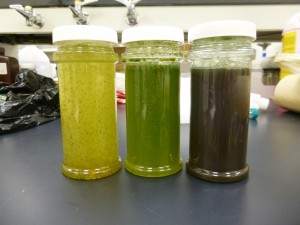

What are Cyanobacterial toxins?
Cyanobacterial toxins are the naturally produced chemicals stored in the cells of certain species of cyanobacteria. These toxins fall into various categories depending on which part of the body they effect. Some are known to attack the liver (hepatotoxins), others the nervous system (neurotoxins), while some simply irritate the skin.
Hepatotoxins are the most widespread and frequently occurring toxins produced by cyanobacteria, which is why officials are most concerned with health risks associated with these types of toxins. Nerve toxins are rare but have been linked to periodic losses of livestock, pets, and wildlife.
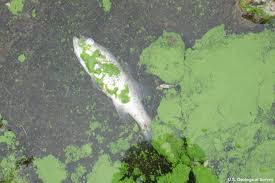 The amount of toxin produced varies over time and from lake to lake. A cyanobacterial bloom may produce very little or no toxin in one lake and a later bloom in the same lake could produce a large toxin concentration. Unfortunately, no known method exists for predicting the toxin content of a cyanobacterial bloom.
The amount of toxin produced varies over time and from lake to lake. A cyanobacterial bloom may produce very little or no toxin in one lake and a later bloom in the same lake could produce a large toxin concentration. Unfortunately, no known method exists for predicting the toxin content of a cyanobacterial bloom.
When a toxic bloom dies and decays, the toxins are released into the water, where they then have the potential to exert their toxic effects on humans and animals. Although certain toxins may persist in the water at low levels for many months, most will in degrade in the sunlight within 2 weeks.
What are microcystins?
Microcystins are one group of toxins produced and released by cyanobacteria. The name originates from the species of cyanobacteria the toxins were originally isolated from, Microcystis aeruginosa. Microcystins are the most common of the cyanobacterial hepato- (liver) toxins, and are the toxins most often responsible for poisoning animals and humans who have come into contact with toxic blooms.
Microcystins are extremely stable in water because of their chemical structure, which means they can survive in both warm and cold water, and tolerate radical changes in water chemistry, including pH. There have been about 50 different types of microcystins identified so far. Of these, microcystins-LR appears to be the most common microcystins toxin, and is found in water supplies around the world. This is why most testing and research is focused on this particular toxin.
Does the presence of a cyanobacterial bloom always mean the water is toxic?
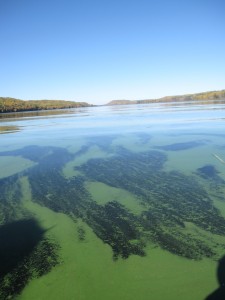 No. Not all species of cyanobacteria will produce toxins; therefore, presence of a bloom does not always mean the water is dangerous. Researchers tend to agree that between 30 and 50 per cent of blooms are harmless because they contain only nontoxic species of cyanobacteria. However, different species of cyanobacteria can be found within the same bloom, and even if only one is toxic, then the whole bloom can be considered poisonous and potentially dangerous.
No. Not all species of cyanobacteria will produce toxins; therefore, presence of a bloom does not always mean the water is dangerous. Researchers tend to agree that between 30 and 50 per cent of blooms are harmless because they contain only nontoxic species of cyanobacteria. However, different species of cyanobacteria can be found within the same bloom, and even if only one is toxic, then the whole bloom can be considered poisonous and potentially dangerous.
There is no way to tell if a bloom is toxic or not based on its appearance, you should therefore treat all blooms with caution. Samples have to be analysed in a laboratory before a body of water can be declared safe. Currently laboratories in the province of Alberta are able to rapidly detect the concentrations of certain microcystins, and the neurotoxin anatoxin-a. Alberta Health Services recommends avoiding all contact with cyanobacteria blooms.
Are blooms a new problem?
No. Better understanding of cyanobacteria and better reporting systems, along with increased media attention over the years sometimes makes it seem like this is a new problem. In actuality, cyanobacteria have been around for a long time. The earliest reliable account of a cyanobacterial bloom dates back to the 12th century, while the toxic effects of cyanobacteria on livestock have been recognized for more than 100 years.
However, current human activities which increase the movement of nutrients into the water (e.g. use of fertilizers, wastewater effluent, etc.) do have the potential to increase the severity and frequency of cyanobacterial blooms. Therefore, good watershed management is the key to limiting the potential for cyanobacterial growth.
Why are Alberta lakes susceptible to cyanobacterial blooms?
Phosphorus and nitrogen are important nutrients needed for cyanobacterial growth. Therefore, the more nutrient rich (eutrophic) the lake is, the more likely it is to experience and sustain surface blooms of cyanobacteria.
In most cases, Alberta’s lake are naturally nutrient rich, and more nutrients may be added to the lakes as runoff or atmospheric deposition from the watershed. Because nutrient-rich sedimentary bedrock and soil exists throughout much of Alberta, our lakes tend to contain naturally high concentrations of phosphorous and nitrogen dissolved within the water. Consequently, many Alberta lakes are sufficiently eutrophic to naturally support cyanobacterial blooms.
However, urban, agricultural, and industrial activities, along with shoreline disturbances like the removal of natural vegetation, can enhance the movement of nutrients to surface waters. This in turn has the potential to increase the severity and frequency of cyanobacterial blooms in Alberta lakes.
Health Risks:
Cyanobacterial blooms may pose a serious health risk to humans and animals since several species are known to produce potent liver and/or nerve toxins. Livestock, pets, and wildlife are the most at risk of consuming large quantities of toxic cyanobacteria, and cases of illness and death are reported periodically in Alberta.
Humans are less likely to intentionally or unintentionally consume cyanobacteria; however, illness can still occur following contact with cyanobacteria and their toxins during recreational water activities. Children tend to be more at risk for getting sick from cyanobacteria because they often spend more time in the water, and may swallow contaminated water by accident. Lake users pay attention to health advisories and avoid recreating in cyanobacteria blooms.
How are people exposed to cyanobacteria and their toxins?
 There are three main routes of exposure to cyanobacteria and their toxins: direct contact with the skin, accidental ingestion, and inhalation of aerosols (tiny water droplets) containing the cyanobacterial toxins. Risks of exposure by these three routes may occur during recreational activities like swimming, boating, and water-skiing. You may also inhale aerosols when watering lawns, irrigating golf courses, etc.
There are three main routes of exposure to cyanobacteria and their toxins: direct contact with the skin, accidental ingestion, and inhalation of aerosols (tiny water droplets) containing the cyanobacterial toxins. Risks of exposure by these three routes may occur during recreational activities like swimming, boating, and water-skiing. You may also inhale aerosols when watering lawns, irrigating golf courses, etc.
There is also a risk of ingesting cyanotoxins from drinking water that uses a surface water source contaminated with a cyanobacterial bloom.
What effect does cyanobacterial toxins have on human health?
The particular health effect depends on the type and concentration of the toxin, as well as the route and length of time of exposure.
All cyanotoxins have the ability to cause acute and chronic illness. Acute effects include skin and mucous membrane irritations, while chronic effects can include liver, kidney, and central nervous system damage. Acute effects occur after short term exposure to contaminated water, while chr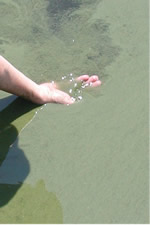 onic effects can occur after ingesting the toxins over a long period of time.
onic effects can occur after ingesting the toxins over a long period of time.
Swimming in contaminated water may irritate the skin and eyes. This may cause itchy hives, blisters, or a rash to appear on the skin (especially around the bathing suit area) after contact has occurred with cyanobacteria and their toxins. Some individuals may also experience red swollen eyes after exposure. Symptoms may persist more than 2-3 days.
Consuming water contaminated with high levels of cyanotoxins has been associated with damage to the liver and nervous system. However, it is unlikely that adults and older children would voluntarily drink high enough concentrations of contaminated lake water to cause serious illness because during a bloom the water may look and smell bad. People may still suffer acute discomfort after accidentally ingesting or inhaling aerosolized cyanobacteria while swimming or during other recreational activities. In these cases people may experience headaches, fever, sore throat, dizziness, diarrhoea, vomiting, or abdominal pain.
Children may be more intensely affected by toxic cyanobacterial blooms because they spend more time in the water compared to adults, are also more likely to ingest contaminated shoreline water, and have lower tolerance to cyanotoxins. Children are therefore at greater risk than adults for developing serious liver damage should they ingest high levels of microcystins.
If you suspect you or your family have been exposed to cyanobacterial toxins and have any of these symptoms, you should rinse off your body and consult your health care provider right away.
Can cyanobacterial toxins kill me?
Although many people have become ill from exposure to cyanobacterial toxins, death from contaminated drinking water is unlikely to occur given that water resources are usually effectively managed to control taste, odor and other bacteria related problems.
It is possible however, that exposure to low levels of cyanotoxins can have chronic (i.e. long-term) health effects in humans, such as liver, kidney, and central nervous system damage.
What happens if my pets or livestock are exposed to cyanobacterial toxins?
 Although lakes are often a good source of drinking water for pets and livestock, lakes containing cyanobacterial blooms may become deadly if toxins are present. When animals drink the contaminated water, they ingest the cyanobacterial toxins, which in turn may damage their liver and/or nervous system, depending on which toxins are present in the water.
Although lakes are often a good source of drinking water for pets and livestock, lakes containing cyanobacterial blooms may become deadly if toxins are present. When animals drink the contaminated water, they ingest the cyanobacterial toxins, which in turn may damage their liver and/or nervous system, depending on which toxins are present in the water.
Symptoms of exposure may include loss of appetite, vomiting, weakness, seizures, difficulty breathing and convulsions. If your animal experiences any of these symptoms, you should seek veterinary advice and be sure to tell them that your animal may have come into contact with cyanobacterial toxins.
Animals are not more sensitive than people to the effects of the toxins; instead, they can become extremely ill because they are simply not as concerned with the way the water looks or smells before they drink it. This means they are more likely to be exposed to higher concentrations of ingested toxins compared to humans, and therefore experience more severe symptoms. In Alberta, there have been cases of illness and death of livestock and wildlife associated with drinking water contaminated with cyanobacterial toxins.
How can I protect my pets and livestock from cyanobacterial toxins?
 Don’t let pets or livestock swim in or drink from areas where the water is discoloured or where you see foam, scum, or mats of cyanobacteria on the water. If pets (especially dogs) swim in scummy water, rinse them off immediately – do not let them lick the cyanobacteria (and toxins) off their fur. To reduce risk to livestock, do not allow rainwater or other surface runoff to flow through livestock areas.
Don’t let pets or livestock swim in or drink from areas where the water is discoloured or where you see foam, scum, or mats of cyanobacteria on the water. If pets (especially dogs) swim in scummy water, rinse them off immediately – do not let them lick the cyanobacteria (and toxins) off their fur. To reduce risk to livestock, do not allow rainwater or other surface runoff to flow through livestock areas.
Treatments to counteract the effects of cyanobacterial toxins in animals have not been extensively investigated to date.
Recreational water
Can water containing cyanobacterial blooms be used for recreational activities?
Unlike controls available with a drinking water source contaminated with cyanobacteria, there are very few options available once these bacteria accumulate in water used for recreational activities. Blooms in recreational bodies of water are usually associated with unpleasant odours and unattractive appearance on shorelines as the scum accumulates and decays.
When individuals come into contact with, accidentally ingest or inhale water containing high levels of toxic cyanobacteria they may experience irritation of the skin, eyes, nose and throat, fever, nausea or inflammation of the respiratory tract. You should therefore avoid swimming and other water-related activities in areas with cyanobacteria blooms.
What should I do if I suspect water has been contaminated by toxic cyanobacteria?
Because all cyanobacterial blooms are potentially toxic, it’s always best to stay away from visible accumulation of blue-green algae.
- For up-to-date health advisories relating to Alberta lakes:
Alberta Health services advisories
- If you suspect a problem related to a cyanobacterial bloom or require further information on cyanobacteria, you can call Heath Link at 811.
How are cyanobacterial (blue-green algae) advisories determined?
There are a number of agencies working together to keep Albertans informed on cyanobacteria in their lakes. Alberta Health Services (AHS) is currently monitoring various public recreational beaches throughout the province where cyanobacterial blooms are known to occur. Agencies like Alberta Environment and Parks; the Alberta Environmental Monitoring, Evaluation, and Reporting Agency (AEMERA); and ALMS are also monitoring whole lakes for presence of cyanobacteria and their toxins.
An advisory has been issued for my lake but the water doesn’t look any different, why is that?
Alberta Health Services generally determines their advisories from data collected at public beaches. Based on wind movement, not all areas of the lake will be affected equally. Caution should therefore be maintained around lakes and beaches with cyanobacterial advisories, and blooms should be avoided.
Current recreational water safety guidelines regarding cyanobacteria and their toxins:
- Total Cyanobacteria levels of 50,000 cells/mL OR
- total microcystin levels of 10 μg/L (expressed as microcystin-LR)
Laboratory samples that exceed guideline values, or development of a surface bloom near the shore indicates the potential for exposure to cyanobacteria and/or their toxins in amounts that are harmful to human health. Because of this, AHS will issue a public advisory informing individuals of potential health risks associated with cyanobacterial blooms.
 Seasonal signage is posted at all lakes where a cyanobacterial bloom has been observed at a public beach. Lakes with two consecutive years of AHS blue-green algae advisories will have new permanent signs with information about cyanobacteria place at the beach.
Seasonal signage is posted at all lakes where a cyanobacterial bloom has been observed at a public beach. Lakes with two consecutive years of AHS blue-green algae advisories will have new permanent signs with information about cyanobacteria place at the beach.
Can I eat fish from contaminated water?
You can still eat fish from cyanobacterial contaminated water but it’s recommended that the organ meat not be eaten. Microcystins can accumulate in the tissues of fish, particularly in the visceral organs (i.e. liver, kidney, etc.), and in shellfish. Levels in the tissue depend upon the severity of the bloom in the area where the fish or shellfish are caught or collected. In general, caution should be taken when considering consumption of fish caught in areas where major blooms have occurred.
What precautions can you take?
- Avoid recreating in blue-green algae (cyanobacteria) blooms.
- Never drink untreated surface water, whether or not cyanobacteria blooms are present. Untreated surface water may contain other bacteria, parasites or viruses, as well as cyanotoxins that could cause illness if consumed.
- Have another source of drinking water for pets and livestock, and don’t let them swim in contaminated water.
- Don’t water edible plants with contaminated water, as its not known if fruits and vegetables can absorb the toxins.
- Boiling water will not remove the toxins; therefore, avoid cooking with water that may be contaminated with cyanobacteria.
- Stop using the water and seek medical attention if symptoms such as skin, eye or throat irritation, or breathing difficulties occur while in contact with the water.
How can I prevent cyanobacterial growth?
The best way to help prevent cyanobacterial growth is through good watershed management and to reduce nutrient loading in lakes and ponds. You can limit the amount of nutrients entering the system by not using lawn fertilizers, properly maintaining your private sewage systems, and maintaining a buffer of natural vegetation around water bodies to filter the incoming water.
Where to get more information about cyanobacteria:
Provincial:
-
- Alberta Environment and Sustainable Resource cyanobacterial toxin fact sheets:
These sites describe cyanobacteria toxins in greater detail and discuss their health effects on humans and animals
- Alberta Environment and Sustainable Resource cyanobacterial toxin fact sheets:
- Alberta Environment and Sustainable Resource Cyanobacteria Blooms Fact Sheet
- Cyanobacteria Information Site
This site covers common health concerns associated with cyanobacteria and their toxins - Alberta Health Services Cyanobacteria fact sheet
A PDF of Frequently Asked Questions about cyanobacteria
Federal:
- Health Canada’s cyanobacteria Site
This site covers a wide range of topics relating to cyanobacteria, their toxins, and your health
International:
- Centers for Disease Control and Prevention (CDC) harmful algal blooms (HAB) Site
This site defines HABs; describes CDC’s HABs related activities; and provides links to data, publications and other HABs resources.
- Centers for Disease Control and Prevention cyanobacteria site
This site defines cyanobacteria; describes CDC’s cyanobacteria-related activities; and provides links to data, publications and other cyanobacteria resources
- World Health Organization water Site:
This site provides links to drinking and recreational water quality, including the impacts of cyanobacteria and cyanobacterial toxins


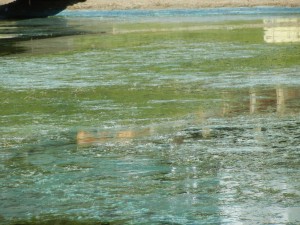
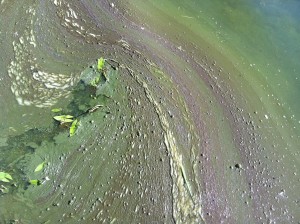
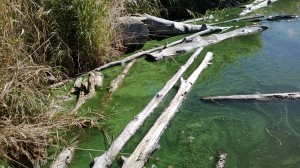

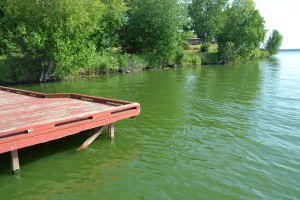
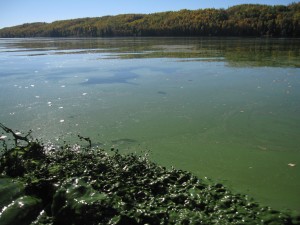
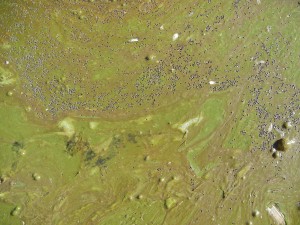
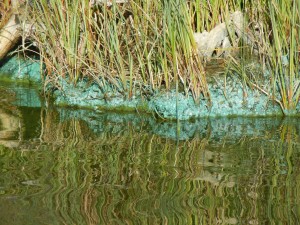
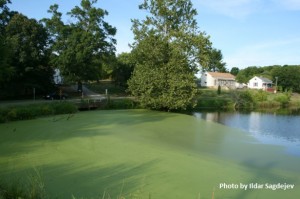


 The members of the steering committee will continue to play a strong role in facilitating and tracking implementation actions. This includes any actions they were responsible for, as well as tracking other committees and sector’s actions and progress made towards achieving the plan’s outcomes. Ongoing communication is essential to successful implementation and achieving outcomes, therefore a regular reporting mechanism could be set up in order to provide regular evaluation of the plan.
The members of the steering committee will continue to play a strong role in facilitating and tracking implementation actions. This includes any actions they were responsible for, as well as tracking other committees and sector’s actions and progress made towards achieving the plan’s outcomes. Ongoing communication is essential to successful implementation and achieving outcomes, therefore a regular reporting mechanism could be set up in order to provide regular evaluation of the plan.

 Reporting is an essential component of any watershed management planning and implementation process. There are two main types of reporting that should be shared with stakeholders on a regular basis: implementation reporting & effectiveness reporting.
Reporting is an essential component of any watershed management planning and implementation process. There are two main types of reporting that should be shared with stakeholders on a regular basis: implementation reporting & effectiveness reporting. There is no limit to the number or types of lake management actions, but they typically fall into the categories on the right.
There is no limit to the number or types of lake management actions, but they typically fall into the categories on the right.

 Helpful resources
Helpful resources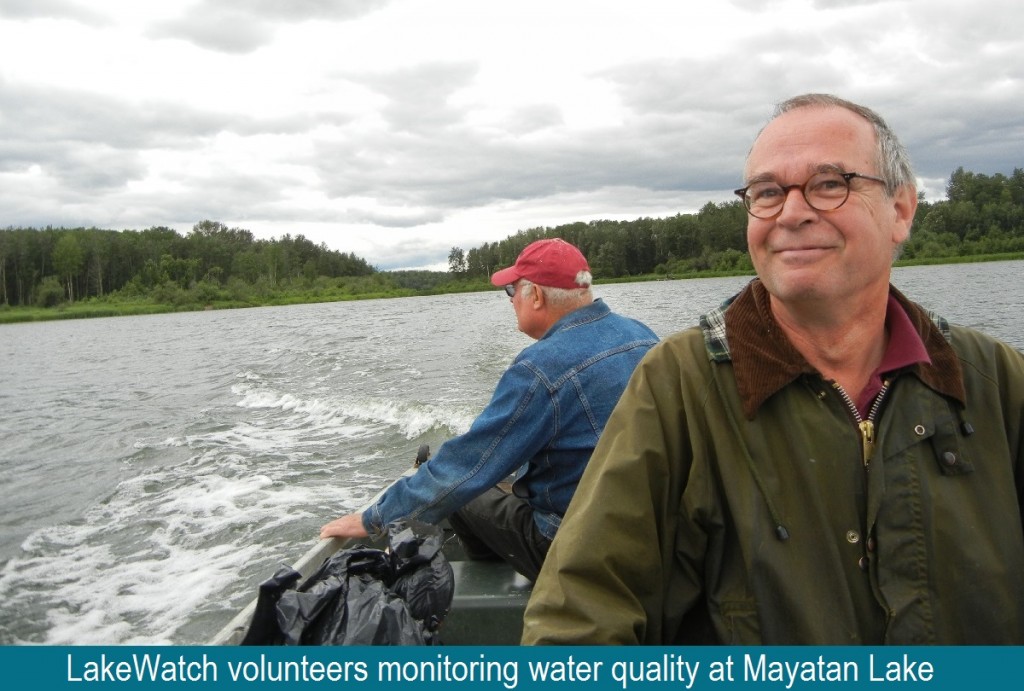 The development of a lake watershed management plan provides the guidance needed to implement activities, but the plan cannot be static. Monitoring the performance of your management actions is essential to understanding whether your goals have been met, and whether further actions are needed. Monitoring and evaluating the implementation and effectiveness of a lake watershed management plan allows assessment of progress towards the goals and objectives of the plan, identification of problems and opportunities, and a collection of critical information required when performing a 5 or 10 year review of the plan.
The development of a lake watershed management plan provides the guidance needed to implement activities, but the plan cannot be static. Monitoring the performance of your management actions is essential to understanding whether your goals have been met, and whether further actions are needed. Monitoring and evaluating the implementation and effectiveness of a lake watershed management plan allows assessment of progress towards the goals and objectives of the plan, identification of problems and opportunities, and a collection of critical information required when performing a 5 or 10 year review of the plan.

 What has the monitoring results of the plan and of the indicators shown? Is there a need to modify the plan? It is important that the lake watershed management plan does not just sit on a shelf. Information gaps should be addressed, action items need to be managed, completed, and evaluated to best address the needs of the lake. Always keep in mind the vision: if the actions taken are not bringing the lake closer to that vision, then the plan needs to be modified. Consider updating both the state of the watershed and the lake watershed management plans at regular intervals to make sure that the actions taken were achieving the desired outcomes and to evaluate what work still needs to be done.
What has the monitoring results of the plan and of the indicators shown? Is there a need to modify the plan? It is important that the lake watershed management plan does not just sit on a shelf. Information gaps should be addressed, action items need to be managed, completed, and evaluated to best address the needs of the lake. Always keep in mind the vision: if the actions taken are not bringing the lake closer to that vision, then the plan needs to be modified. Consider updating both the state of the watershed and the lake watershed management plans at regular intervals to make sure that the actions taken were achieving the desired outcomes and to evaluate what work still needs to be done. Once a plan has been approved by all affected sectors and officially endorsed and released by the steering committee, then implementation can begin in full. Action projects can be large and comprehensive, or made smaller by staging projects over time or into modules that can be tackled one at a time. Fundraising is an issue that many community groups may find intimidating, but experience with programs such as the Pine Lake Restoration Program (see
Once a plan has been approved by all affected sectors and officially endorsed and released by the steering committee, then implementation can begin in full. Action projects can be large and comprehensive, or made smaller by staging projects over time or into modules that can be tackled one at a time. Fundraising is an issue that many community groups may find intimidating, but experience with programs such as the Pine Lake Restoration Program (see  This graphic describes how the various committees and groups will work and interact together. The circle size depicts the approximate number of people involved, and the circles overlapping indicates that some individuals may reside in all of the circles and participate in multiple committees as part of the planning process. The technical committee is shown as an arrow, indicating that it is independent and has relatively few people, and yet it interacts with all of the groups. This graphic may look different depending on the lake and the people involved, and a detailed structure should be agreed upon and described in the plan’s Terms of Reference (Step 6).
This graphic describes how the various committees and groups will work and interact together. The circle size depicts the approximate number of people involved, and the circles overlapping indicates that some individuals may reside in all of the circles and participate in multiple committees as part of the planning process. The technical committee is shown as an arrow, indicating that it is independent and has relatively few people, and yet it interacts with all of the groups. This graphic may look different depending on the lake and the people involved, and a detailed structure should be agreed upon and described in the plan’s Terms of Reference (Step 6).